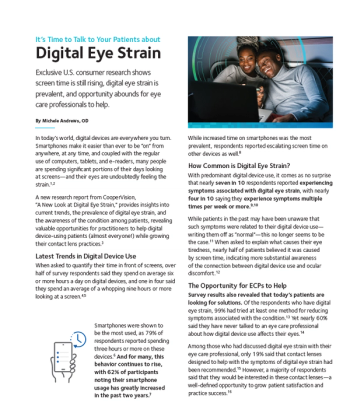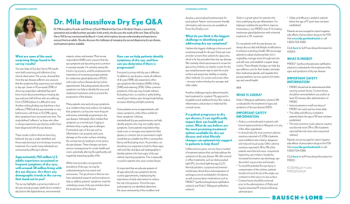
DIABETIC EYE DISEASE: COLLABORATION BETWEEN OPTOMETRISTS AND RETINA SPECIALISTS
EPISODE 1: Current Landscape and Unmet Needs
A discussion on the current landscape and unmet needs in the management of diabetic retinopathy and diabetic macular edema, focusing on the goals of effective care in patients with diabetic retinal disease - what currently works in practice and what can be improved.
EPISODE 2: Shifting the Paradigm in Management
With the progressive nature of diabetic retinal disease and its potential for vision –threatening damage, management of the disease can be multi-faceted. This discussion revolves around how the paradigm in management can be shifted to establish that successful treatment also includes early identification of disease process, appropriate timing of referral, and improved provider and patient awareness.
EPISODE 3: Advances in the Treatment of DME and DR
The advent of treatment modalities for DR and DME has raised some questions on what these advances mean for patients in practice. Using existing data and their own experiences, an optometrist and a retina specialist look at anti-VEGF therapy within clinical practice – the appropriate patient types, its use with other modalities – and its role as the standard of care in diabetic retinal disease.
EPISODE 4: Evolving Partnership and Collaboration in Diabetic Eye Disease
In the concluding discussion to the series, the round table provides a summary of the previous episodes, with a focus on early intervention, patient communication, and collaboration between optometrists and retina specialists in the treatment of diabetic retinopathy and diabetic macular edema.
Presenters
A. Paul Chous, MA, OD, FAAO
Optometrist, Author, Diabetes Eye Care and Education Specialist Washington State
Adjunct Professor, Western University of Health Sciences Pomona, CA
W. Lloyd Clark, MD
Ophthalmologist at Palmetto Retina Center LLC in West Columbia, SC
Assistant Clinical Professor of Ophthalmology at University of South Carolina School of Medicine in Columbia, SC
Diana V. Do, MD
Professor of Ophthalmology and Vice Chair for Clinical Affairs at the Byers Eye Institute, Stanford University School of Medicine.
Mark T. Dunbar, OD, FAAO
Director of Optometric Services Bascom Palmer Eye Institute UHealth - University of Miami Health System.
Steven Ferrucci, OD, FAAO
Chief of Optometry, Sepulveda VA Ambulatory Care Center
Associate Professor, Southern California College of Optometry
Nancy M. Holekamp, MD
Affiliated with Barnes-Jewish Hospital in St Louis, MO
Director of Retina Services at the Pepose Vision Institute in Chesterfield, MO
Professor of Clinical Ophthalmology and Visual Sciences at Washington University School of Medicine in St Louis, MO
Ehsan Rahimy, MD
Ophthalmologist at Mills-Peninsula Medical Center in Burlingame, CA
Machine Learning Physician Consultant at Google LLC in Mountain View, CA
Clinical Instructor of Ophthalmology at Jefferson Medical College in Philadelphia, PA
Director of the Vitreoretinal Disease & Surgery Division in the Department of Ophthalmology at Palo Alto Medical Foundation in Palo Alto, CA
Leo Semes, OD, FAAO
Professor Emeritus of Optometry and Vision Science, University of Alabama at Birmingham
Charlie Wykoff, MD, PHD
Retina Specialist and Ophthalmologist with Retina Consultants of Houston
Director of Research at RCH and the Greater Houston Retina Research Foundation
All presenters were compensated for their time by Regeneron.
Newsletter
Want more insights like this? Subscribe to Optometry Times and get clinical pearls and practice tips delivered straight to your inbox.









































